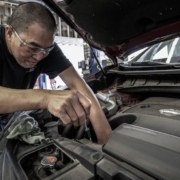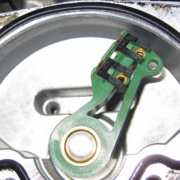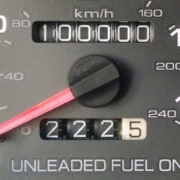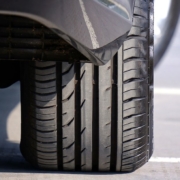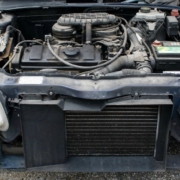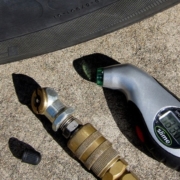Servicing your vehicle is usually the last thing on your mind. The daily grind of life tends to take all of your focus, so unless it is actively causing an issue, your vehicle’s maintenance schedule is out of sight, out of mind. The problem is that ignoring that schedule will eventually cause a failure, costing you more time and money that necessary. As the old saying goes, an ounce of prevention is worth a pound of cure.
While oil changes and tire service are the most common maintenance items, we have compiled a list of the top 10 most overlooked services that you should keep in mind the next time you change the oil.
Power Steering Service
This is one of those overlooked services that rarely comes up in a situation before it is too late. Over time, the fluid in your power steering system picks up dirty and moisture, clogging the steering components, eventually causing a failure. Adding a power steering fluid additive will help maintain your system’s function, as will a periodic flushing of the system.
Wheel Alignment
How your wheels are aligned not only effects how the car handles, but also the life of your tires and suspension components. The alignment can fall out of adjustment from several factors, including component wear and potholes. Hitting a curb is a sure-fire way to jar the alignment as well. When the alignment is out, the car may pull to one side or the other, steer erratically, and may even dart across the lanes with just a small move of the wheel, making driving the car a perilous adventure. Not only have that, but even a slight mis-alignment leads to uneven and premature tire worn. An annual wheel alignment ensures that your wheels are pointed the right way.
Differential Service
The differential is the component that transfers input from the transmission to the wheels. Some front wheel drive vehicles incorporate this into the transmission, but some have separate units, and all rear wheel drive vehicles have a rear differential. The rear axles an differential are housed in the rear end housing. Over time, the gear oil breaks down, reducing its viscosity and ability to properly lubricate the differential and wheel bearings. Additionally, the transfer case (for vehicles equipped with one) should be serviced at the same time as the differential. Most manufacturers have a set maintenance schedule for the differential and transfer case fluids.
Cabin Air Filter
When you turn on the AC does your car smell like a junior high gym locker? Can you still smell that dead skunk you drove by last week? Does the air coming out of your vents barely move? Well then maybe you need to check the cabin air filter. You may not even realize there is such a thing, but it helps filter out the bad smells, dirt and other debris from entering the interior of the car as your drive. One side of the filter is directly exposed to the outside environment, meaning they get wet. This moisture builds up, leading to mildew and mold spores that stink up the interior of the car. These are easily changed by the owner in most vehicles; you just need to look up the location in your vehicle’s manual and use a new filter from your local NAPA AutoParts store. Maybe your car won’t smell like roadkill anymore.
Timing Belt Replacement
Not all vehicles have timing belts. DO NOT confuse this with the accessory drive belt, which drives all of the engine accessories such as the AC compressor, alternator and water pump. The timing belt connects the crankshaft to the camshaft(s). Some engines have external belts, while others use internal belts. Regardless of how they are accessed, these are incredibly important to the function of the engine. If the engine is what is known as an “interference” engine, a slipping or broken timing belt can not only keep the engine from running, but can destroy the internals of the engine itself as the valves and piston can collide. Each manufacturer has specific maintenance schedules for the timing belt, make sure you check your owner’s manual. If your odometer is showing 50-60,000 miles, you need to get your timing belt checked. This is one of the overlooked services that can really hit your wallet hard if you ignore it.
Transmission Service
Leaving your transmission fluid unchecked for 100,000 miles it usually a recipe for disaster, so don’t let it go that long. Follow your manufacturer’s guidelines on transmission filter and fluid change, and be sure to check the fluid level at every oil change. Burnt or dark-colored fluid is a sign of an overheated transmission and continued use without servicing could lead to internal damage.
Air Conditioning Service
When the AC system goes down, it is usually during blistering heat or brutal cold. These situations can often be avoided with a few basic tips. The AC compressor contains oils that lubricate the seals and moving parts. Because the AC only sees action in the summer months, these oils tend to drain away from the places they are needed the most. Switching the AC on for 15 or so minutes once a month will keep those oils circulated, so that the seals and moving parts stay functional. Additionally, an annual service replenishes those oils and checks the system for leaks and ensures the proper levels of refrigerant.
Brake Service
Brake fluid is hygroscopic, that means it can absorb water out of the air. Even though the hydraulic system is sealed, the reservoir is not, meaning it can pull water straight out of the air and into the system. Over time, this corrodes the internal workings of the hydraulic system of your brakes. You can use a simple dip-strip (available at your local NAPA AUTO PARTS Store) to test your brake fluid. If it is a dirty dark brown color, it is old and should be flushed and replaced with new fluid.
Coolant System
Unless you drive a Corvair or VW Beetle, chances are your engine is water cooled. Because you are dealing with water, heat and several different types of metal, there are all kinds of potential maladies that can occur inside the cooling system. Contrary to popular belief, aluminum does in fact corrode, particularly when water and electricity are in close proximity, this is known as electrolysis. The cooling system is full of electrolysis, rust and degrading coolant which can lead to broken parts, cracked blocks and overheated engines. Check your coolant for the proper level of anti-freeze each winter, and flush the system with fresh fluid every 2 years.
Fuel System Cleaning
Carbon, sludge and dirt. These nasty bits of junk flow through your fuel system every single second the engine is running. As the build-up grows, the level of fuel that can pass is reduced, meaning the engine loses power, the fuel economy suffers and the drivability of the car is diminished. Restore the performance and economy of your engine with a fuel system cleaning. This can be performed in most cases with a twice-yearly fuel additive to the gas tank. Be sure to use quality gasoline to avoid dirty fuel.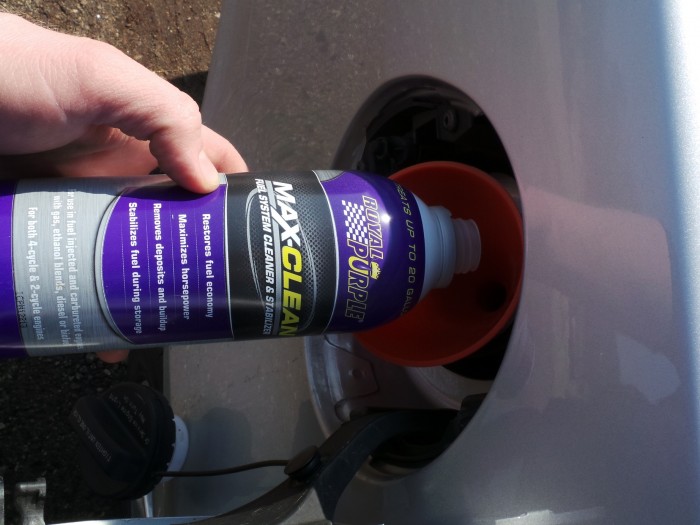
Addressing these overlooked services will only take a few hours combined, but they will add thousands of miles of life to your vehicle. A recent survey showed that 90% of all vehicles on the road have at least one basic maintenance item that has not been performed. Don’t let your car be the one on the side of the road when those issues come to fruition, visit your local NAPA AutoCare specialist and create a service schedule today.
Check out all the maintenance parts available on NAPA Online or trust one of our 17,000 NAPA AutoCare locations for routine maintenance and repairs. For more information on overlooked services for your vehicle, chat with a knowledgeable expert at your local NAPA AUTO PARTS store.
Related Articles

